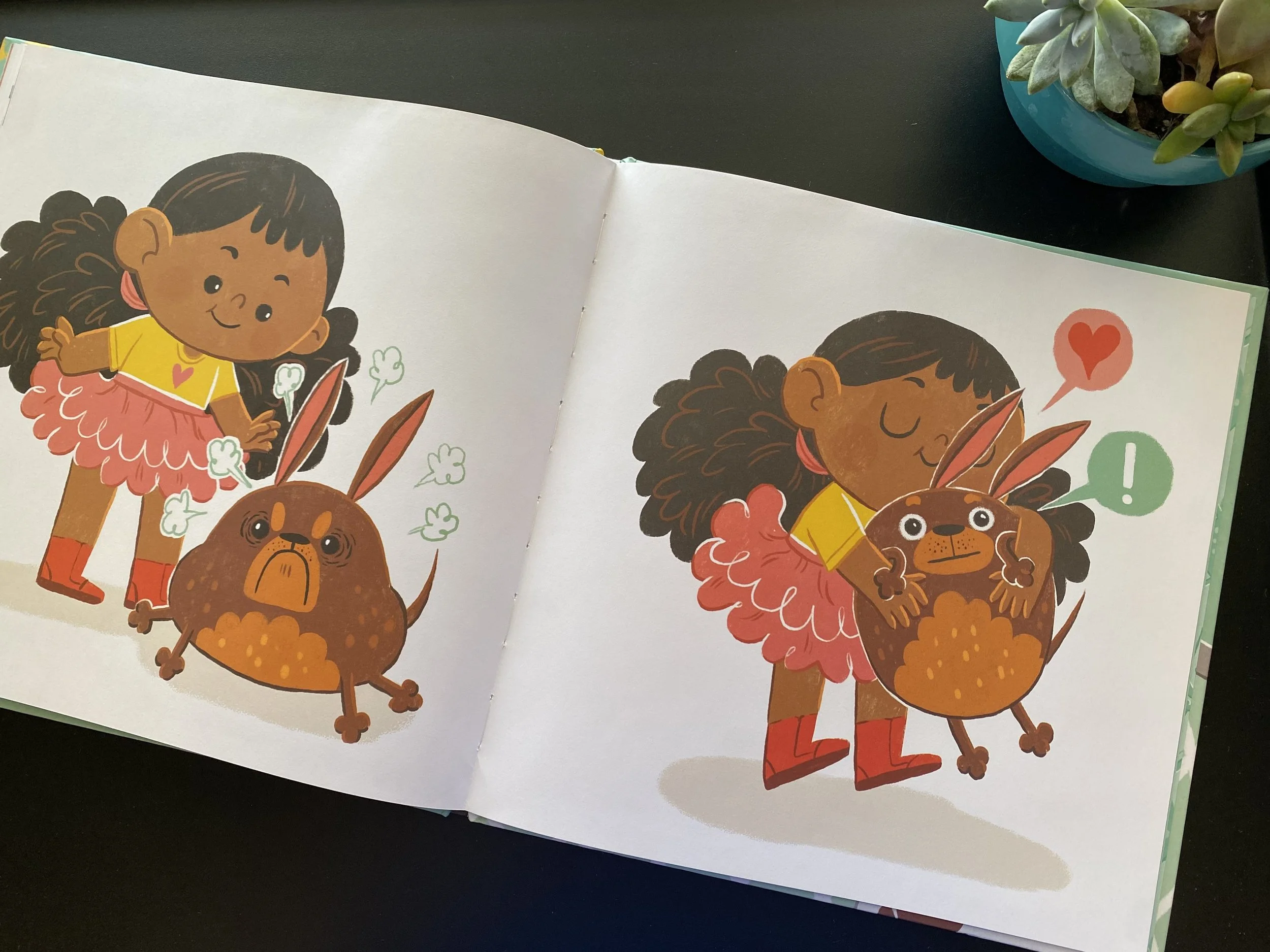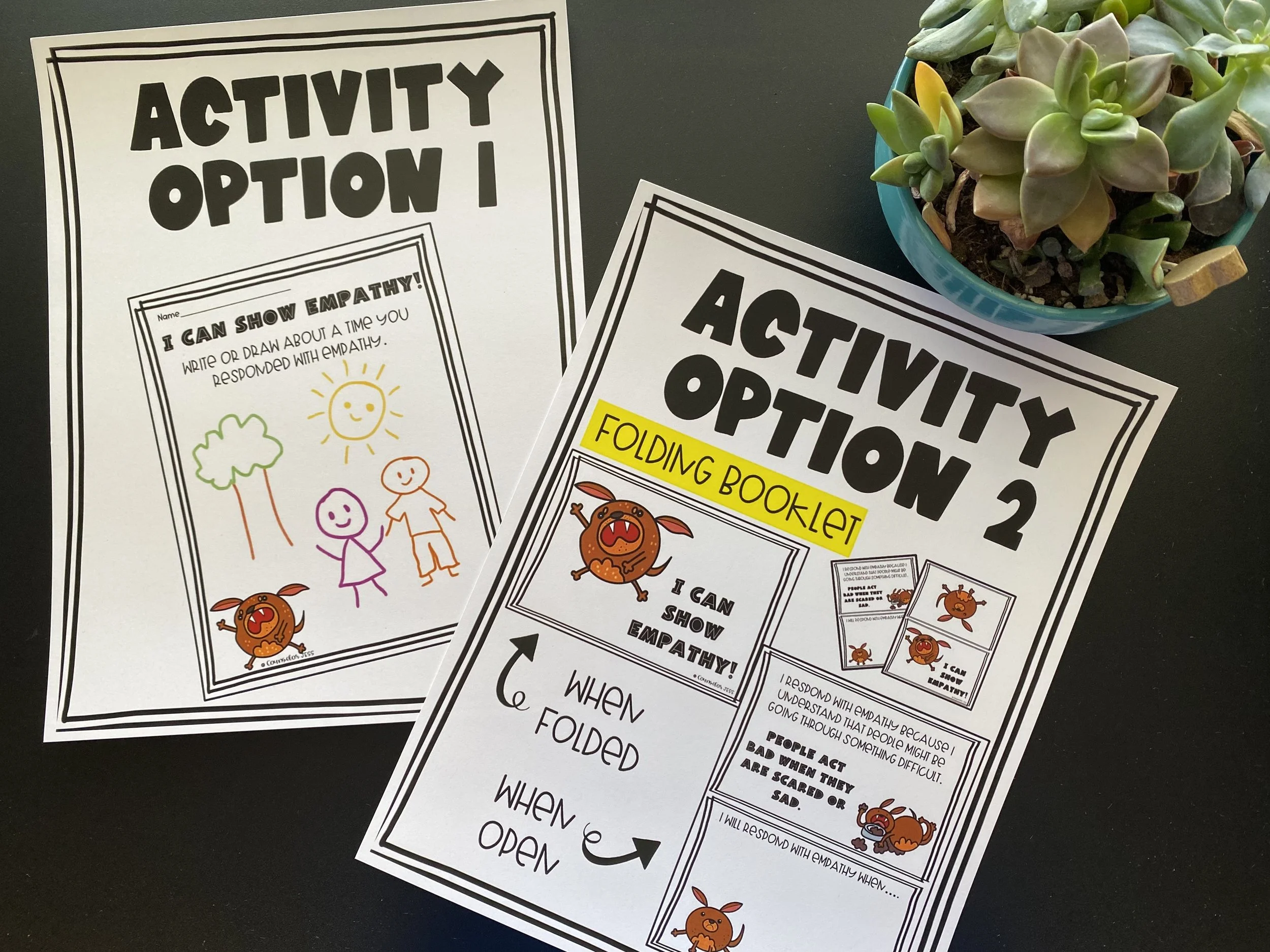Empathy Lesson and Activities for Counseling and SEL
Empathy is more than just understanding someone else's feelings—it's about stepping into their shoes and experiencing their emotions alongside them. It's a skill that allows us to connect with others, show kindness, and offer support.
In the adorable story "I Am a Wolf" by Kelly Leigh Miller, a prickly dog finds herself in an animal shelter, insisting she's a lone wolf.
At the beginning of the story, she presents herself as mean and scary, pushing others away with her prickly personality. But beneath her tough exterior lies fear and loneliness. Like many individuals, she struggles to express her true emotions, resorting to defensive behavior instead.
Enter a compassionate little girl who sees beyond the dog's facade. Despite the dog's initial aggression, she refuses to judge or condemn. Instead, she extends kindness and understanding, ultimately helping the dog feel safe and loved. She recognizes the dog's need for love and acceptance and welcomes her into a loving family. She truly exemplifies empathy in its purest form.
Teaching Empathy
Empathy isn't always instinctual, especially when faced with hostility or anger.
In these situations, emotions run high, and it's easy for kids to feel defensive or hurt. Being attacked or encountering rudeness triggers a natural instinct to protect oneself, often leading to reactionary responses rather than empathetic ones.
Children may struggle to understand the underlying reasons behind someone's hostility, making it even more difficult to extend empathy in such moments. However, it's precisely during these times of tension that the practice of empathy holds the most significance.
After we read the story, we discuss practical ways to cultivate empathy in our daily lives. From listening without interrupting to comforting a friend in need, empathy can be shown in various acts of kindness and compassion. Scenarios that depict situations where it can be difficult to show empathy (like when the other person is being mean or rude) open the door for great discussion about different ways it might be possible to show empathy, even when it’s not easy to do! Engaging in these practice scenarios helps by providing a safe space for children to explore complex emotions and perspectives, while encouraging them to consider how they would feel in similar circumstances.
Teaching and modeling various ways to show empathy provides your students with tangible strategies they can easily implement in their daily lives. Simple examples make empathy more accessible and relatable to children, giving them the confidence to practice these skills. As children practice these small acts of kindness and compassion, they not only strengthen their own empathetic skills but also contribute to creating a more empathetic and supportive community overall.
7 Simple Ways for Kids to Show Empathy
1. Listen Without Interrupting
Encourage kids to practice active listening when someone is speaking. This means giving their full attention, nodding to show understanding, and refraining from interrupting until the person has finished talking.
2. Offer a Helping Hand
Teach children to offer assistance to someone in need, whether it's helping a friend carry books, assisting a teacher with classroom tasks, or offering to help a family member with chores.
3. Say Something Kind
Encourage kids to express kindness through words by giving compliments, saying thank you, or offering words of encouragement to others.
4. Be Inclusive
Encourage inclusivity by inviting others to join in activities, including classmates who may be feeling left out, or playing with someone new.
5. Share and Take Turns
Teach children the importance of sharing and taking turns, whether it's sharing toys during playtime or taking turns in games and activities.
6. Stand Up Against Bullying
Empower children to speak up against bullying behavior and to support those who may be experiencing bullying. Encourage them to be a friend to those who are being bullied and to report any instances of bullying to a trusted adult.
7. Celebrate Others' Successes
Teach kids to celebrate the achievements and successes of their peers, whether it's congratulating a classmate on a good grade or cheering on a friend during a sports game. Showing genuine happiness for others cultivates a sense of camaraderie and support.
Activity
After the lesson, we do a reflection activity to think about how we can respond with empathy in the real world. Now, students have to create the OWN scenarios and think about how they will respond with empathy. They can think about times when they may have been unkind and see from a different perspective what might have been happening through the other person’s eyes. This reflection makes them think about their past actions and how they can respond with more empathy in the future. It opens the door to great discussion and allows students to share ideas about ways they can show empathy in different situations.
Empathy requires courage—the courage to set aside our own hurt feelings and see the world through another's eyes. It's a conscious choice to respond with understanding and compassion, even when it feels easier to react defensively or with anger. "I Am a Wolf" beautifully illustrates this choice can lead to profound healing and connection.
















